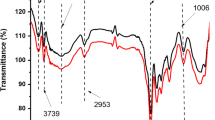Abstract
Cotton is an important industrial commodity for textile production. Its finishing is complicated and requires energy, chemicals and water. In this respect, for its sustainable production, some precautions should be taken. Today, due to consumer’s awareness of environmental issues, studies on ecologic alternative finishing processes have attracted much attention. In this study cotton, which is a natural cellulosic fiber, was bleached via the use of ozone gas and ultrasonic humidifier. Then the coloration of the fabrics was conducted by using green walnut shells (husks). In this way, it was planned to introduce alternative sustainable methods for cotton fabric finishing. It was found that ozone can be used for bleaching of cotton fabrics and even when no mordanting was applied; good colors with sufficient fastnesses were obtained from the cotton fabrics dyed with green walnut shells (husks). Moreover a way to utilize green walnut shells (husks), which are in fact cellulosic waste, was also introduced.






Similar content being viewed by others
References
Bechtold T (2009a) Natural colorants–quinoid, naphthoquinoid and anthraquinoid dyes. In: Bechtold T, Mussak R (ed) In hand book of natural colorants, 1st edn. Wiley, Hoboken, p 157. ISBN: 978-0-470-51199-2
Bechtold T (2009b) Natural colorants in hair dyeing, in hand book of natural colorants. In: Bechtold T, Mussak R (ed) Hand book of natural colorants, 1st edn. Wiley, Hoboken, p 343. ISBN: 978-0-470-51199-2
Benli H, Bahtiyari Mİ (2015) Combination of ozone and ultrasound in pretreatment of cotton fabrics prior to natural dyeing. J Clean Prod 89:116–124
Çağlarırmak N (2003) Biochemical and physical properties of some walnut genotypes (Juglans Regia L.). Nahrung/Food 47(1):28–32
Ghaheh FS, Nateri AS, Mortazavi SM, Abedi D, Mokhtari J (2012) The effect of mordant salts on antibacterial activity of wool fabric dyed with pomegranate and walnut shell extracts. Color Technol 128:473–478
Iglesias SC (2002) Degradation and biodegradability enhancement of nitrobenzene and 2,4-dichlorophenol by means of advanced oxidation processes based on ozone. PhD Thesis, Universitat De Barcelona. Barcelona, pp 37–39
ISO 105-X12 (1993) Textiles-tests for color fastness, Part X12: color fastness to rubbing. International Organization for Standardization, Geneva
ISO 105-B02 (1994) Textiles-tests for color fastness, Part B02: color fastness to artificial light. International Organization for Standardization, Geneva
ISO 105-E04 (1994) Textiles-tests for color fastness, Part E04: color fastness to perspiration. International Organization for Standardization, Geneva
ISO 105-C10 (2006) Textiles-tests for color fastness, Part C10: color fastness to washing with soap or soap and soda, test condition: test A (1). International Organization for Standardization, Geneva
ISO 2062 (2009) Textiles-yarns form packages-determination of single-end breaking force and elongation at break
Karmakar SR (1999) Chemical technology in the pre-treatment processes of textiles. In: Textile science and technology series, vol 12. Elsevier, Amsderdam, pp 160–216, 449–452
Le Marechal AM, Križanec B, Vajnhandl S, Valh JV (2012) Textile finishing industry as an important source of organic pollutants, organic pollutants ten years after the stockholm convention–environmental and analytical update. In: Puzyn T (ed) InTech croatia. ISBN 978-953-307-917-2
Min RR, Huang KS (1999) Feasibility of a one-step process for desizing, scouring, bleaching and mercerising of cotton fabrics: dyeing kinetics of direct dyes in a finite bath. Color Technol 115:69–73
Özdemir D, Duran K, Bahtiyari Mİ, Perincek S, Körlü AE (2008) Ozone bleaching of denim fabrics. AATCC Rev 8(9):40–44
Padfield T, Landi S (1966) The light-fastness of the natural dyes. Stud Conserv 11:181–196
Perincek SD, Duran K, Korlu AE, Bahtiyari Mİ (2007) An investigation in the use of ozone gas in the bleaching of cotton fabrics. Ozone Sci Eng 29:325–333
Piccoli HH, Ulson de Souza AA, Ulson de Souza SMAG (2015) Bleaching of knitted cotton fabric applying ozone. Ozone Sci Eng 37:170–177
Prabaharan M, Rao JV (2001) Study on ozone bleaching of cotton fabric–process optimisation, dyeing and finishing properties. Color Technol 117:98–103
Samanta AK, Agarwal P (2009) Application of natural dyes on textiles. Indian J Fibre Text Res 34:384–399
Sarayu K, Sandhya S (2012) Current technologies for biological treatment of textile wastewater: a review. Appl Biochem Biotechnol 167:645–661
Smith KJ (1997) Colour order systems, colour spaces, colour difference and colour scales. In: McDonald R (ed) Colour physics for industry, 2nd edn. JSDC, Bradford, England. pp 121–208. ISBN 0 901956 70 8
Wakelyn PJ, Bertoniere NR, French AD, Thibodeaux DP, Triplett BA, Rousselle MA, Goynes WR, Edwards JV, Hunter L, McAlister DD, Gamble GR (2007) Cotton fibers. In: Lewin M (ed) Handbook of fiber chemistry, 3rd edn. CRC Press, Taylor & Francis Group, Boca Raton, p 620
Acknowledgments
We would like to thank the Scientific and Technological Research Council of Turkey (TÜBİTAK) for its financial support (Project No: 113M065).
Author information
Authors and Affiliations
Corresponding author
Rights and permissions
About this article
Cite this article
Bahtiyari, M.İ., Benli, H. Ozone bleaching of cotton fabrics with the aid of ultrasonic humidifier. Cellulose 23, 2715–2725 (2016). https://doi.org/10.1007/s10570-016-0978-y
Received:
Accepted:
Published:
Issue Date:
DOI: https://doi.org/10.1007/s10570-016-0978-y




